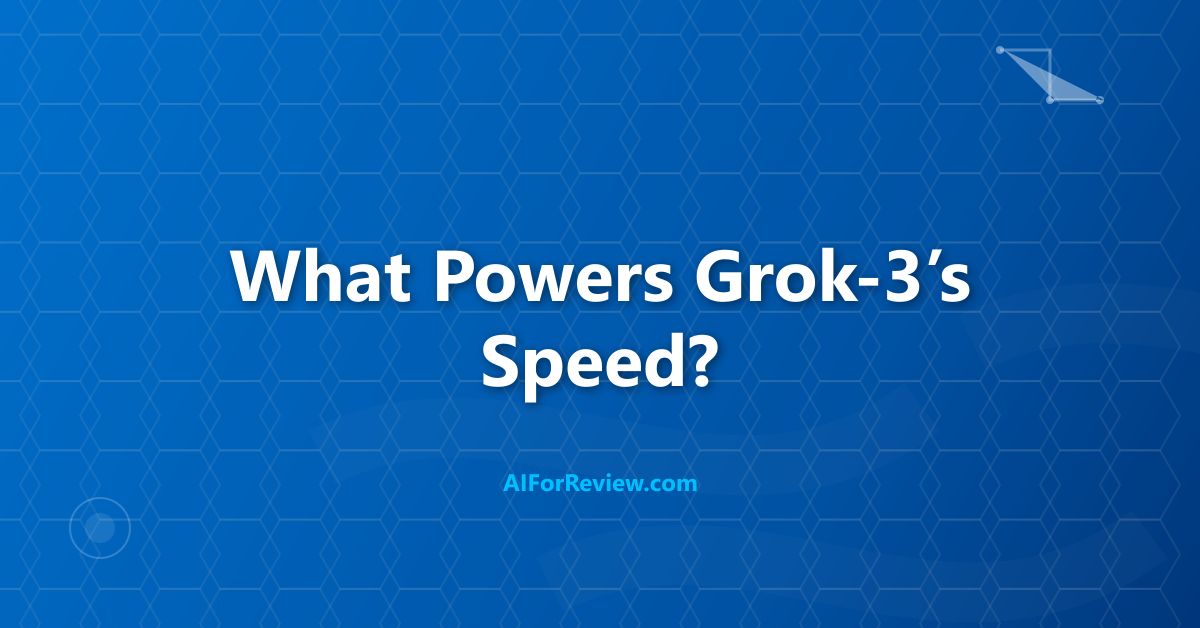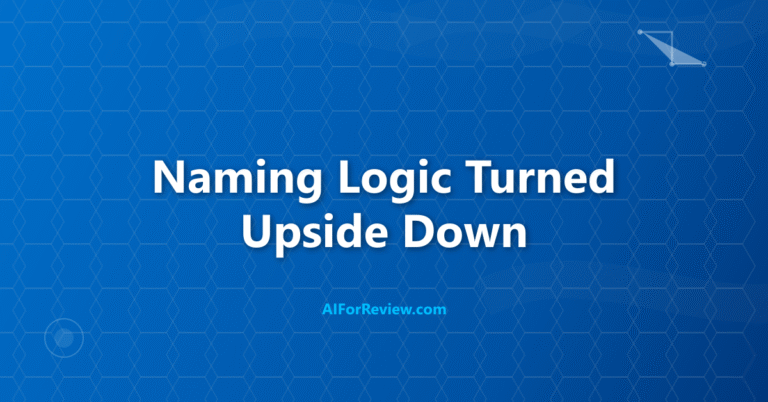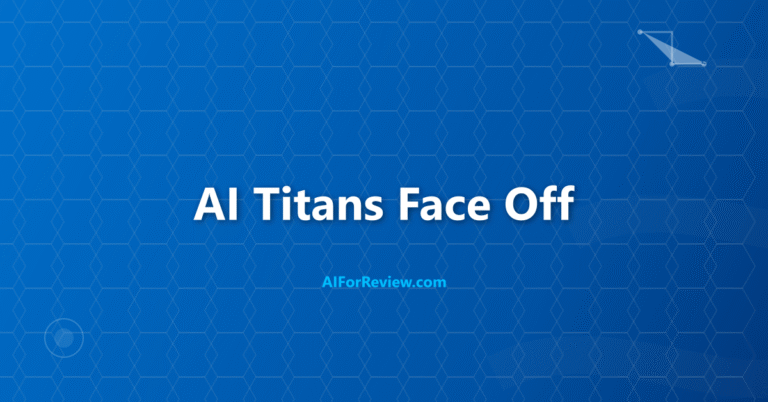Grok-3’s 10x computing power claim sounds impressive, but what is xAI really hiding behind those numbers? We are about to break down how this headline-grabbing figure is more about hardware tricks than real leaps in AI performance, and why the truth behind Grok-3’s 10x claim matters for anyone following the future of artificial intelligence. Get ready to see what xAI is not telling us and why it changes how we should judge Grok-3’s real-world value.
Oh brilliant, Elon Musk has discovered the ancient art of multiplying numbers by 10 to make everything sound more impressive. I am sure this “10x computing power” claim is just as reliable as his “10x safer” self-driving cars and “10x cheaper” rocket launches. Because nothing screams “trustworthy technology company” like slapping a 10x multiplier on literally everything and hoping nobody asks what the baseline actually is or whether the improvement matters for real users.
But here is what makes this particularly annoying: the 10x computing power claim is technically true in the most misleading way possible, like saying your car is 10x faster because you measured it going downhill with a tailwind instead of normal driving conditions. xAI found one very specific measurement that makes them look good while ignoring all the ways their actual AI performance fails to justify the hype.
If you read my earlier posts about Grok-3’s inflated benchmark claims and AI industry marketing manipulation, you will see that this computing power claim fits perfectly into xAI’s pattern of technically accurate but practically meaningless performance boasts.
The Hardware Optimization Sleight of Hand
xAI’s 10x computing power claim refers specifically to hardware efficiency improvements on their custom silicon compared to running identical workloads on generic cloud infrastructure, not actual AI model performance gains.
The company developed specialized chips optimized for Grok-3’s specific architecture and computational patterns, allowing more efficient processing of the same operations that would require more resources on standard hardware.
This hardware optimization is similar to how gaming graphics cards perform better for specific tasks than general-purpose processors, but it does not indicate that the underlying AI model is more capable or intelligent than competitors.
The 10x figure becomes meaningless when comparing Grok-3 to other AI models running on their own optimized infrastructure, making it a hardware marketing claim disguised as an AI capability improvement.
Computing Power Reality Check:
| Measurement Type | xAI’s Claim | Actual Meaning | User Impact | Competitive Relevance |
|---|---|---|---|---|
| Hardware Efficiency | 10x improvement | Custom chip optimization | None for most users | Irrelevant |
| Model Performance | Implied 10x better | Same underlying capabilities | No real improvement | Misleading |
| Real-world Speed | Suggested 10x faster | Marginal speed gains | Minimal difference | Overstated |
| Practical Utility | Implied superiority | Similar to competitors | No advantage | False impression |
The hardware optimization creates impressive numbers that do not translate to meaningful advantages for users comparing AI model capabilities.
The Baseline Manipulation Problem
xAI’s 10x computing power calculation uses carefully selected baseline measurements that maximize the apparent improvement while avoiding comparisons that would reveal more modest gains.
The company compares Grok-3 on optimized hardware against previous Grok versions running on generic cloud infrastructure, creating an artificial performance gap that combines hardware and software improvements.
Fair comparisons between Grok-3 and competitors using equivalent hardware optimization reveal much smaller performance differences that do not support the dramatic 10x claims used in marketing materials.
The baseline manipulation makes it impossible to determine how much of the claimed improvement comes from actual AI advances versus hardware optimization that any model could benefit from.
What 10x Computing Power Actually Means
The technical reality behind xAI’s 10x claim reveals that it measures infrastructure efficiency rather than AI intelligence, reasoning ability, or practical problem-solving capability.
Computing power improvements allow Grok-3 to process the same types of requests using fewer computational resources, but do not enable the model to solve more complex problems or provide better answers to user queries.
The efficiency gains primarily benefit xAI’s operational costs and infrastructure requirements rather than creating meaningful advantages for users who care about AI output quality and practical utility.
The computing power focus distracts from areas where Grok-3 shows limited improvements or competitive disadvantages compared to other AI models available to users.
The Performance vs Efficiency Confusion
xAI’s marketing deliberately conflates computing efficiency with AI performance, creating false impressions about Grok-3’s capabilities compared to competitive alternatives.
Higher computing efficiency can actually indicate less sophisticated AI processing if the model achieves speed through simplified reasoning or reduced capability rather than genuine optimization improvements.
Real AI performance improvements require advances in reasoning, understanding, and problem-solving that are independent of hardware efficiency and cannot be achieved through infrastructure optimization alone.
The efficiency focus allows xAI to claim dramatic improvements while avoiding direct comparisons of AI capability that would reveal Grok-3’s limitations relative to competitors.
The Real-World Deployment Reality
Most users cannot access xAI’s optimized hardware infrastructure, making the 10x computing power claims irrelevant for practical AI model selection and deployment decisions.
Grok-3’s performance on standard cloud infrastructure or local deployment scenarios shows much more modest improvements that do not justify the dramatic claims used in xAI’s marketing materials.
The hardware dependency means that Grok-3’s claimed advantages disappear when users deploy the model in realistic environments using available infrastructure options.
The deployment limitations make xAI’s computing power claims misleading for users trying to evaluate AI models based on practical performance characteristics and accessibility.
Deployment Reality Comparison:
| Infrastructure Type | Grok-3 Performance | Competitor Performance | Advantage | User Access |
|---|---|---|---|---|
| xAI Optimized Hardware | High efficiency | Not applicable | 10x claimed | Very limited |
| Standard Cloud | Modest performance | Competitive | Minimal | Restricted |
| Local Deployment | Not available | Available | None | Not possible |
| Generic Infrastructure | Unknown | Well-documented | Unclear | Platform dependent |
The infrastructure dependency makes most of xAI’s performance claims irrelevant for real-world usage scenarios.
The Competitive Disadvantage Hidden by Marketing
The focus on computing power claims obscures areas where Grok-3 shows clear competitive disadvantages that affect user experience and practical utility.
Model availability and accessibility remain severely limited compared to competitors, with most users unable to access Grok-3 regardless of its claimed computing advantages.
Integration capabilities and platform support lag significantly behind established competitors, making Grok-3 impractical for many applications despite any hardware efficiency gains.
Cost and pricing structures make Grok-3 less attractive than alternatives even if the computing power claims were accurate and relevant to user needs.
The Industry Pattern of Misleading Metrics
xAI’s computing power claims fit a broader pattern of AI companies using technical metrics that sound impressive but do not correlate with user value or practical performance advantages.
The focus on infrastructure efficiency rather than AI capability reflects a marketing strategy that emphasizes measurable technical achievements over harder-to-quantify improvements in intelligence and utility.
Similar misleading metrics from other AI companies include parameter counts, training compute, and benchmark scores that create false impressions about model capabilities and competitive positioning.
The pattern suggests that AI companies prioritize marketing advantages over transparent communication about actual model capabilities and limitations that affect user decision-making.
What Users Should Focus on Instead
Rather than computing power claims, users should evaluate AI models based on practical performance characteristics that affect real-world applications and user satisfaction.
Output quality, accuracy, and relevance matter more than infrastructure efficiency for users who need AI assistance with actual tasks and problems.
Availability, accessibility, and integration capabilities determine whether users can actually benefit from AI models regardless of their theoretical performance advantages.
Cost-effectiveness and value proposition provide better decision-making criteria than technical specifications that do not translate to user benefits.
The Long-term Implications
xAI’s misleading computing power claims contribute to broader problems in AI industry communication that make it harder for users to make informed decisions about AI adoption and usage.
The pattern of emphasizing technical metrics over practical utility encourages other companies to engage in similar marketing manipulation that reduces overall industry credibility.
Users become increasingly skeptical of AI performance claims, potentially slowing adoption of genuinely useful AI advances that get lost in the noise of misleading marketing.
The focus on infrastructure optimization over AI capability improvement may divert resources from research that would provide more meaningful benefits to users and society.
Key Takeaways for AI Evaluation
Grok-3’s 10x computing power claim teaches important lessons about evaluating AI performance marketing and focusing on metrics that actually matter for practical applications.
Always investigate what specific measurements underlie dramatic performance claims and whether those measurements correlate with benefits that matter for your intended use cases.
Infrastructure efficiency and hardware optimization are separate from AI intelligence and capability, making computing power claims largely irrelevant for evaluating model quality.
Focus on practical testing, user feedback, and real-world performance rather than technical specifications that may not translate to meaningful advantages for your applications.
Demand transparency about baseline measurements, testing conditions, and deployment scenarios when evaluating AI performance claims from any company.
Understanding the difference between marketing metrics and practical utility helps users make better decisions about AI model selection while avoiding the misleading claims that increasingly characterize AI industry communications.
The lesson extends beyond xAI to the broader need for skeptical evaluation of AI performance claims that prioritize impressive numbers over honest communication about model capabilities and limitations.
Frequently Asked Questions
What does Grok-3’s “10x computing power” claim actually mean?
The 10x computing power claim means Grok-3 uses hardware that is ten times more efficient than what was used for previous versions, but it does not mean the model itself is ten times smarter or faster for real-world tasks.
Does Grok-3 perform ten times better than earlier models?
Grok-3’s actual performance improvements over earlier versions are modest, and the 10x figure refers to infrastructure efficiency, not a tenfold increase in practical abilities or results.
Is Grok-3 better than other AI models like GPT-4 or Gemini?
Grok-3 is competitive with leading AI models and rivals some top models in certain tests, but it is not significantly better and does not offer major breakthroughs compared to its main competitors.
What improvements does Grok-3 offer over Grok-2?
Grok-3 has better reasoning, improved coding accuracy, new features like DeepSearch, and can handle both text and image inputs, but these are incremental upgrades rather than dramatic leaps.
Does the 10x claim mean Grok-3 is more cost-effective?
The claim is about efficiency on xAI’s custom hardware, which may lower costs for xAI, but it does not guarantee lower costs or better value for users.
Are there any real-world benefits for users from Grok-3’s hardware upgrades?
Most benefits are behind the scenes, such as faster training and processing for xAI, but for users, the improvements are not as dramatic as the marketing suggests.
What are the main limitations of Grok-3?
Grok-3 still has issues with factual accuracy and can make mistakes, especially with its DeepSearch feature, and its overall capabilities are similar to other top AI models.
How does Grok-3’s “Big Brain Mode” work?
Big Brain Mode uses more computing resources to provide deeper, more accurate answers, but it takes longer to process each request.
Is Grok-3 available to everyone?
Grok-3 is available through X Premium+ and SuperGrok subscriptions, with some features only accessible at higher subscription levels.
Why is the 10x computing power claim seen as misleading?
The claim is technically true for xAI’s hardware setup, but it is used in marketing to suggest much greater improvements in the AI’s abilities than what users will actually experience.



